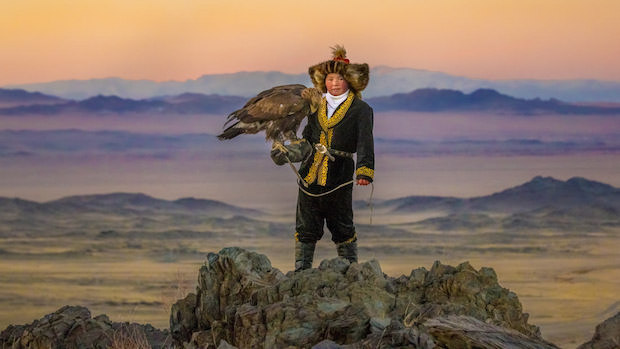 Back to selection
Back to selection
Christopher Raymond on Shooting in the Remote Regions of Mongolia for The Eagle Huntress
 The Eagle Huntress
The Eagle Huntress An entry in the Sundance Kids program at Sundance 2016, The Eagle Huntress tells the story of a young girl who trains to participate in the Kazakh tradition of hunting with golden eagles. The documentary charts her ascent as she breaks down gender barriers and masters her craft. Filmmaker spoke with Christopher Raymond, the co-DP on the film, about The Eagle Huntress ahead of its Sundance premiere.
Filmmaker: How and why did you wind up being the cinematographer of your film? What were the factors and attributes that led to your being hired for this job?
Raymond: I was hired to shoot some commercial spots in Egypt with Otto, and the reason I got hired for that was because I had a lot of experience shooting around the globe, and I already had been to Mongolia on a feature film. In Egypt Otto told me about The Eagle Huntress.
Filmmaker: What were your artistic goals on this film, and how did you realize them? How did you want your cinematography to enhance the film’s storytelling and treatment of its characters?
Raymond: The goal was to represent the way of living and the landscapes the family live among as truthfully as possible. I usually kept very wide frames and let them interact within to show the vastness of the surroundings.
Filmmaker: Were there any specific influences on your cinematography, whether they be other films, or visual art, of photography, or something else?
Raymond: Otto had given me some Mongolian movies. Also, I had been there before so I had a pretty good idea of what I would be shooting.
Filmmaker: What were the biggest challenges posed by production to those goals?
Raymond: The biggest challenge was just operating in such a remote location. We lived in a Ger (Mongolian teepee), next to the family in the middle of the Altai mountains. So charging, downloading, keeping things clean were all made to be major productions.
Filmmaker: Why did you choose the camera that you did? What lenses did you use?
Raymond: On my leg of the film I used a Canon c300. Since we were gonna be climbing up mountains and moving around this vast terrain we needed something light. I have an Alexa and would have loved to use it, but it would have been too much. Also had a 5d mark 3 for B camera shots. I also used Canon zooms and had gotten some fast primes for inside the gears and night stuff.
Filmmaker: Describe your approach to lighting.
Raymond: Used available light as my lighting package. In the instances we could place someone I just found the best spot and direction and went with the flow of what mother nature was giving us.
Filmmaker: What was the most difficult scene to realize and why? And how did you do it?
Raymond: The most difficult scene was more for Aisholpan, the girl in the film, when she captures the baby eaglet that she went on to train. We had to go up to THE top of mountain, then she was lowered down by the father onto ledge to get the bird.
Filmmaker: Finally, describe the finishing of the film. How much of your look was “baked in” versus realized in the DI?
Raymond: I shot plain neutral files and let them enhance in post.
- Camera: Canon c300 (for my portion of film)
- Lenses: canon zooms and primes
- Lighting: available/ bounce
